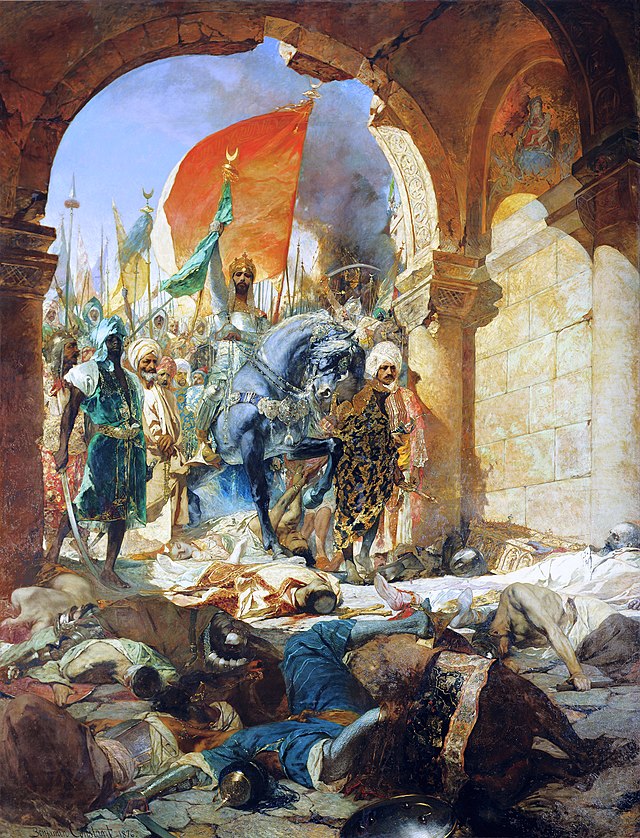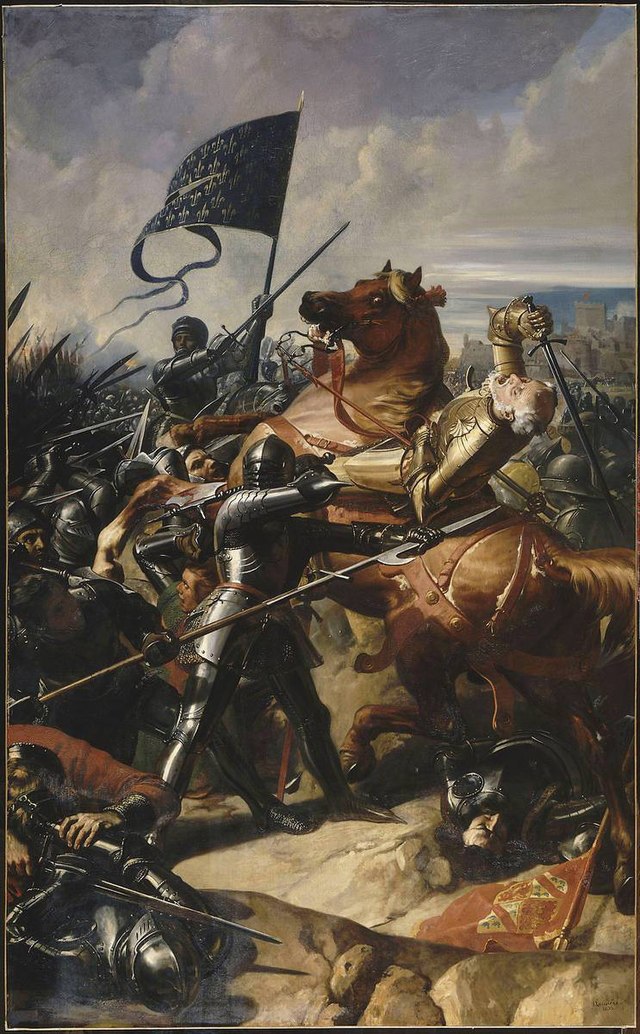Loading AI tools
Calendar year From Wikipedia, the free encyclopedia
Year 1453 (MCDLIII) was a common year starting on Monday of the Julian calendar, the 1453rd year of the Common Era (CE) and Anno Domini (AD) designations, the 453rd year of the 2nd millennium, the 53rd year of the 15th century, and the 4th year of the 1450s decade.
| Gregorian calendar | 1453 MCDLIII |
| Ab urbe condita | 2206 |
| Armenian calendar | 902 ԹՎ ՋԲ |
| Assyrian calendar | 6203 |
| Balinese saka calendar | 1374–1375 |
| Bengali calendar | 860 |
| Berber calendar | 2403 |
| English Regnal year | 31 Hen. 6 – 32 Hen. 6 |
| Buddhist calendar | 1997 |
| Burmese calendar | 815 |
| Byzantine calendar | 6961–6962 |
| Chinese calendar | 壬申年 (Water Monkey) 4150 or 3943 — to — 癸酉年 (Water Rooster) 4151 or 3944 |
| Coptic calendar | 1169–1170 |
| Discordian calendar | 2619 |
| Ethiopian calendar | 1445–1446 |
| Hebrew calendar | 5213–5214 |
| Hindu calendars | |
| - Vikram Samvat | 1509–1510 |
| - Shaka Samvat | 1374–1375 |
| - Kali Yuga | 4553–4554 |
| Holocene calendar | 11453 |
| Igbo calendar | 453–454 |
| Iranian calendar | 831–832 |
| Islamic calendar | 856–857 |
| Japanese calendar | Kyōtoku 2 (享徳2年) |
| Javanese calendar | 1368–1369 |
| Julian calendar | 1453 MCDLIII |
| Korean calendar | 3786 |
| Minguo calendar | 459 before ROC 民前459年 |
| Nanakshahi calendar | −15 |
| Thai solar calendar | 1995–1996 |
| Tibetan calendar | 阳水猴年 (male Water-Monkey) 1579 or 1198 or 426 — to — 阴水鸡年 (female Water-Rooster) 1580 or 1199 or 427 |

It is sometimes cited as the notional end of the Middle Ages by historians who define the medieval period as the time between the Fall of the Western Roman Empire and the fall of the Eastern Roman Empire, due to the Fall of Constantinople.[1]


Seamless Wikipedia browsing. On steroids.
Every time you click a link to Wikipedia, Wiktionary or Wikiquote in your browser's search results, it will show the modern Wikiwand interface.
Wikiwand extension is a five stars, simple, with minimum permission required to keep your browsing private, safe and transparent.